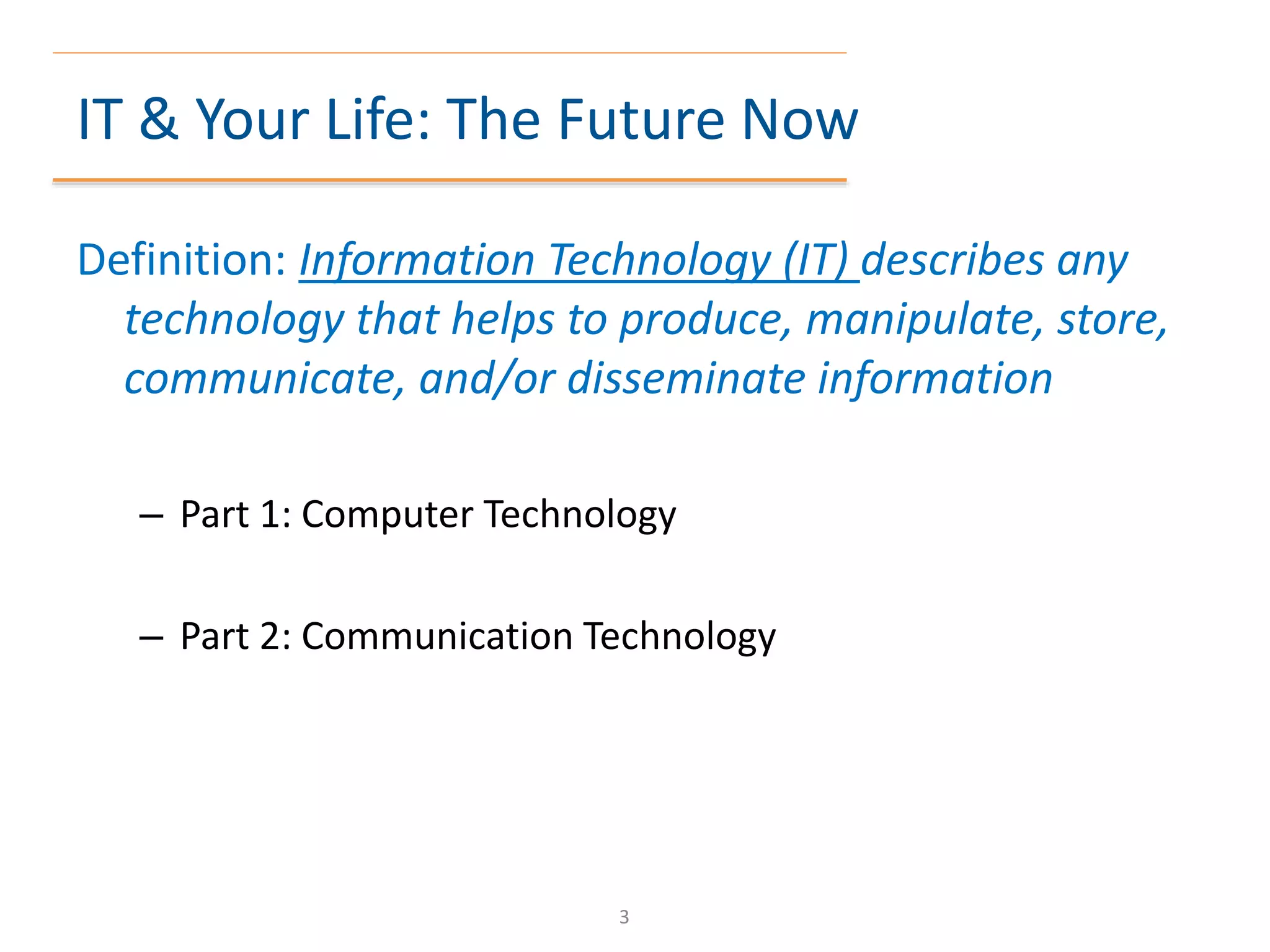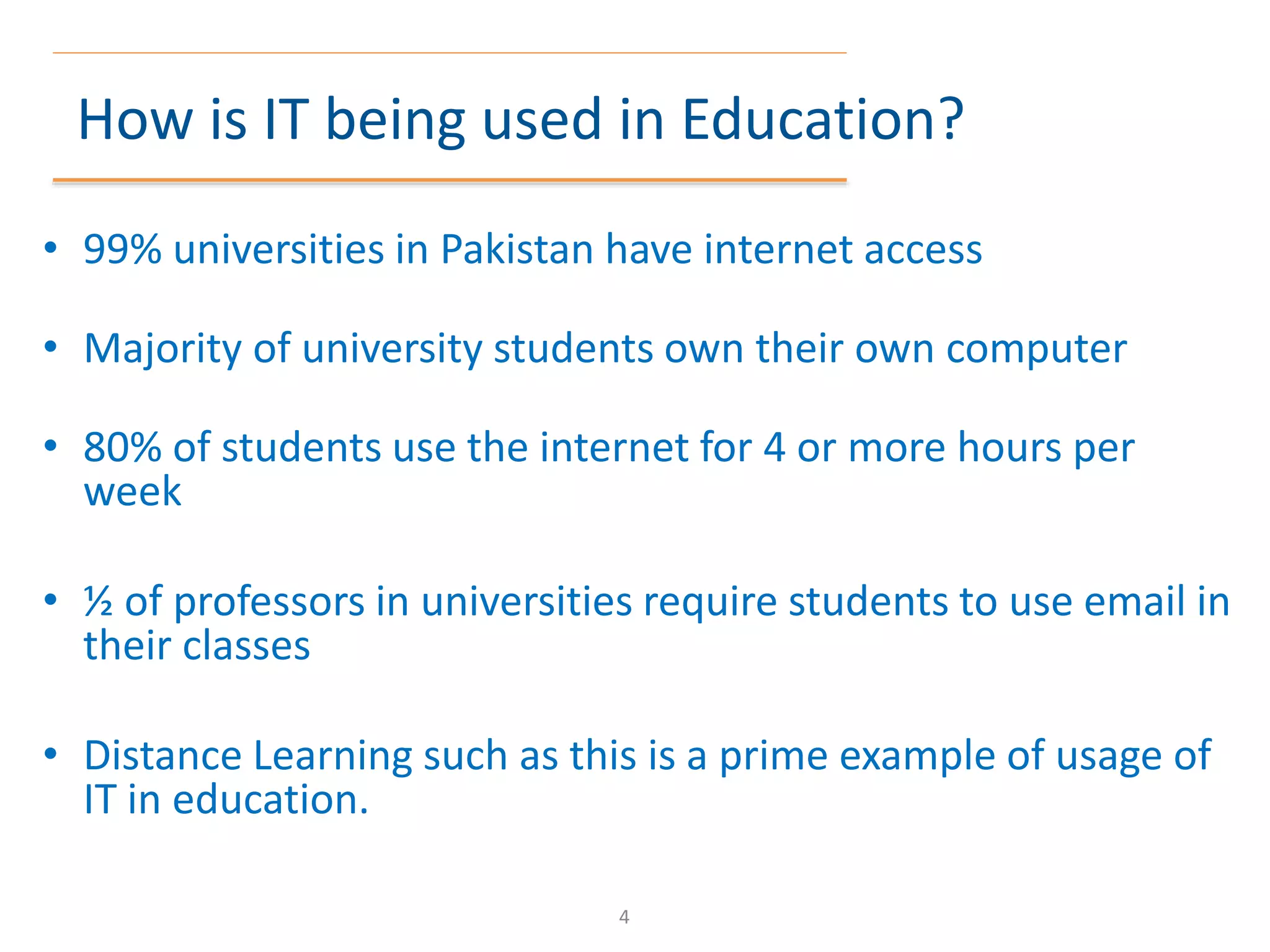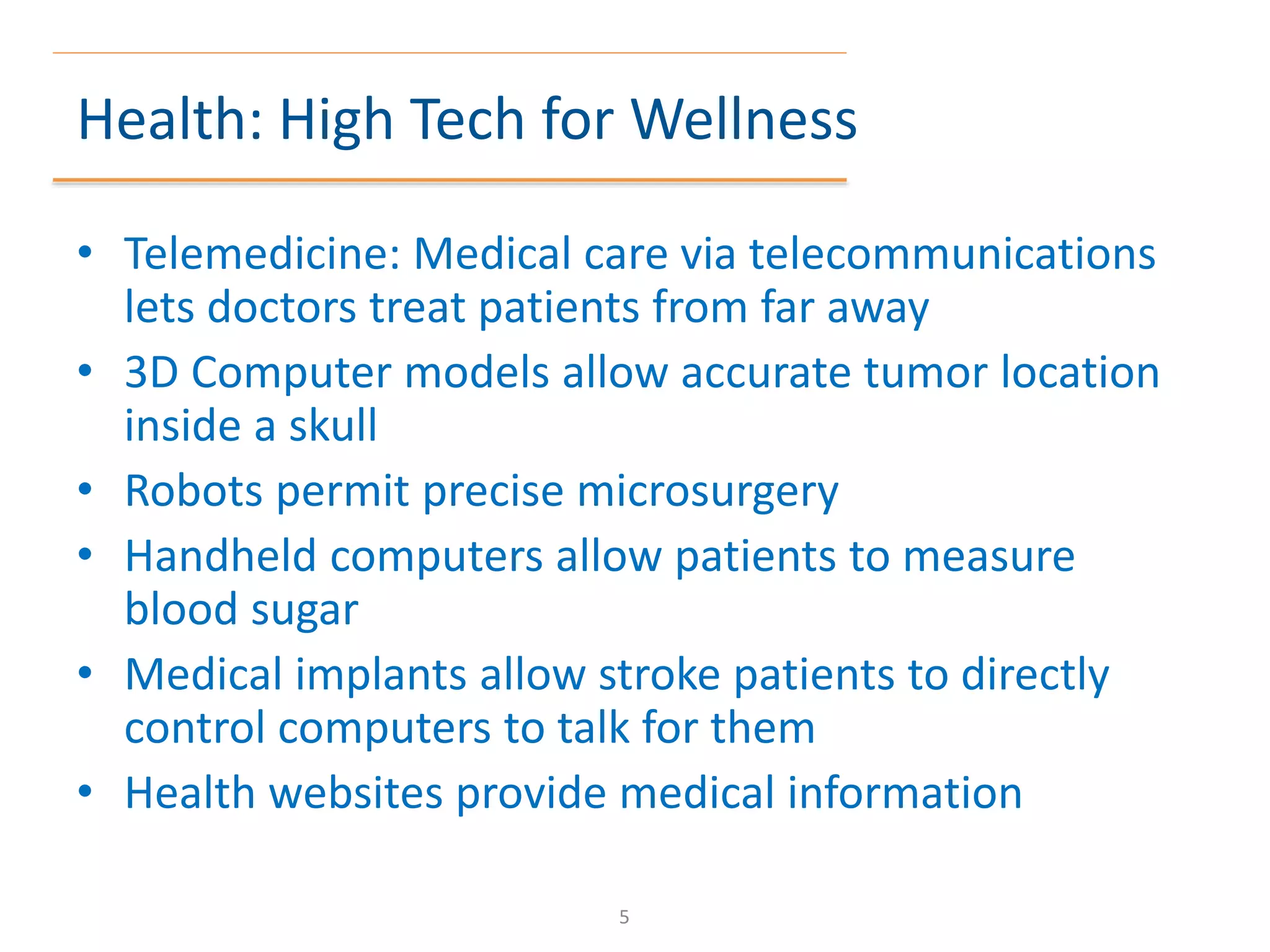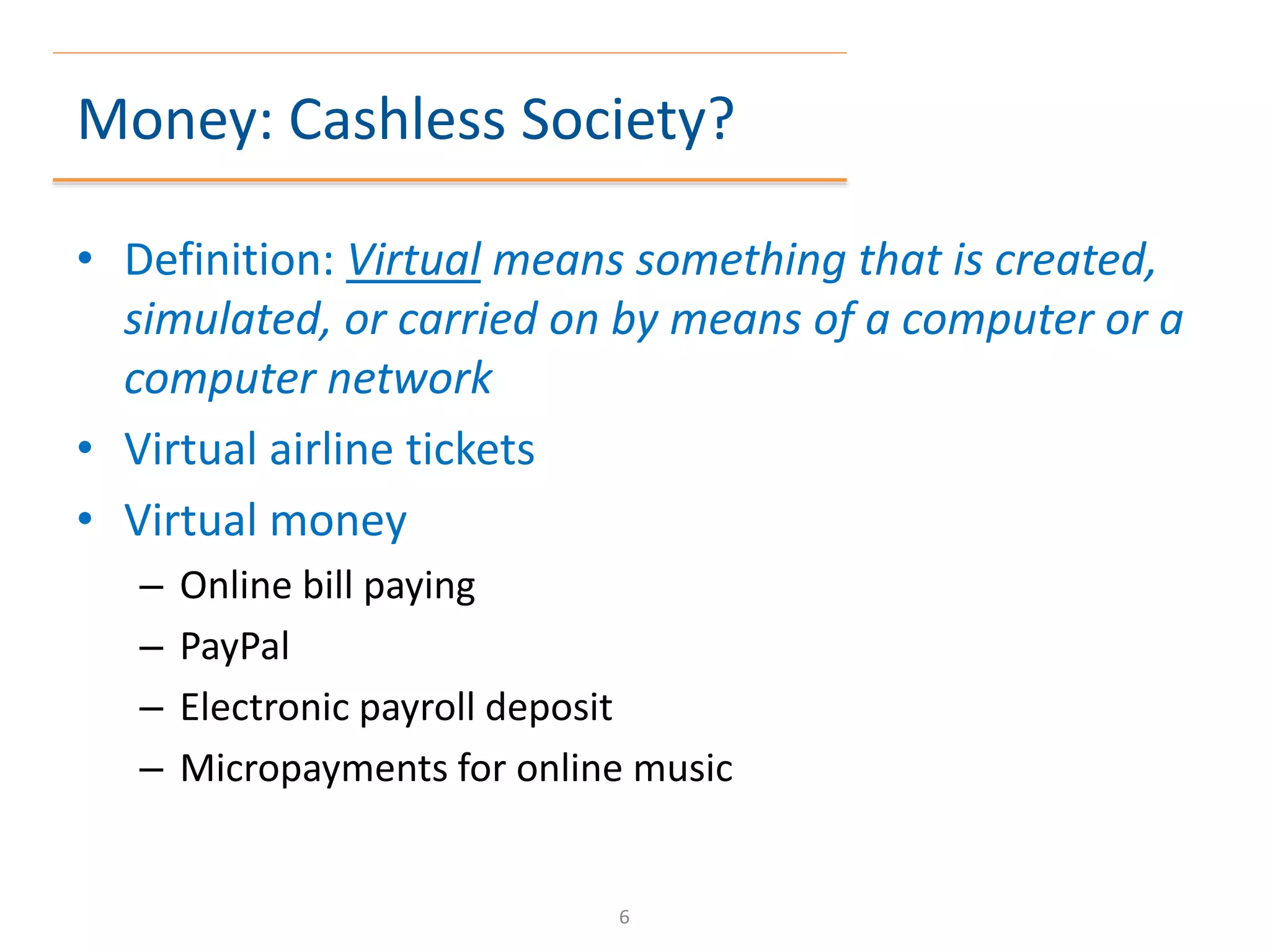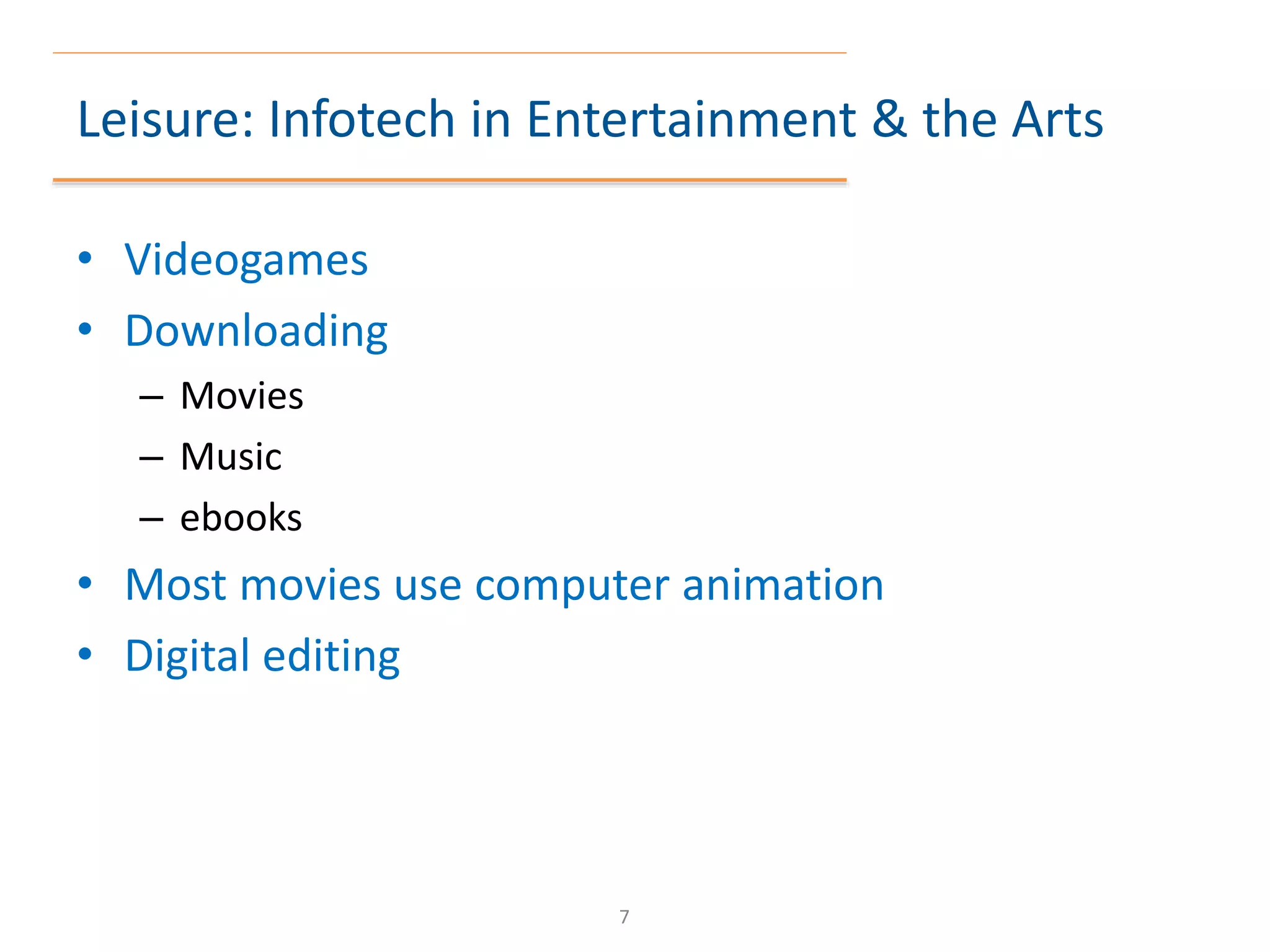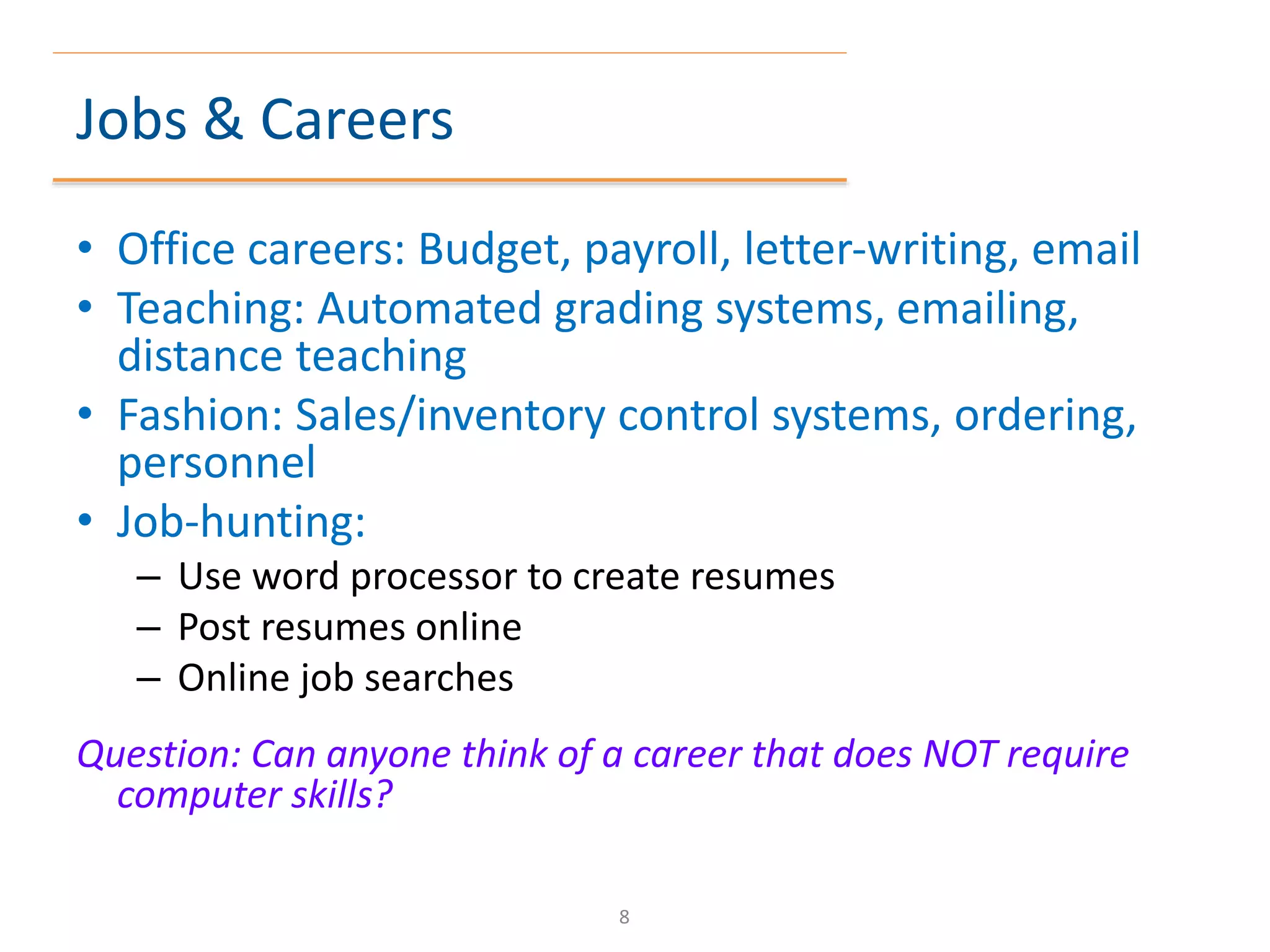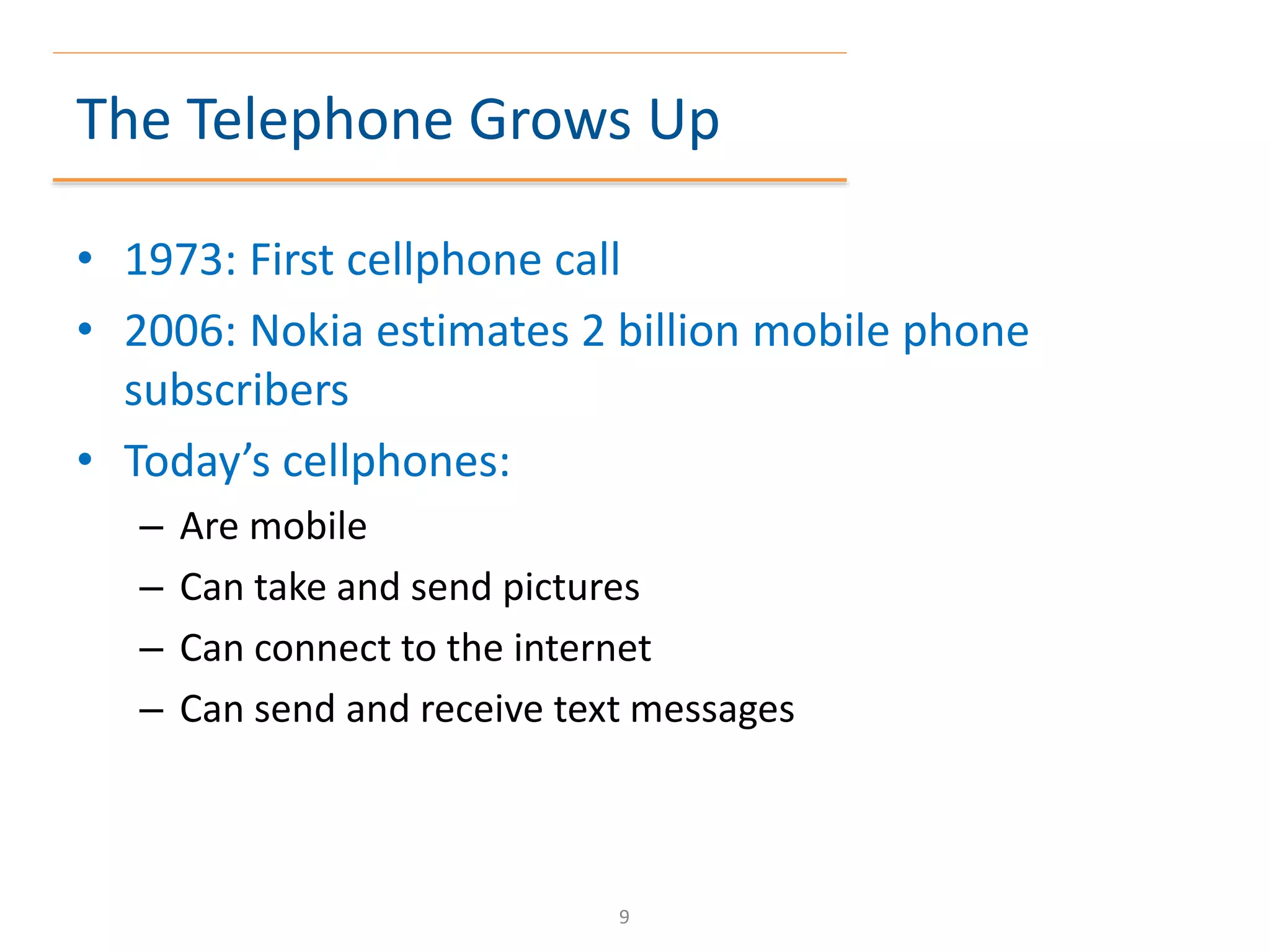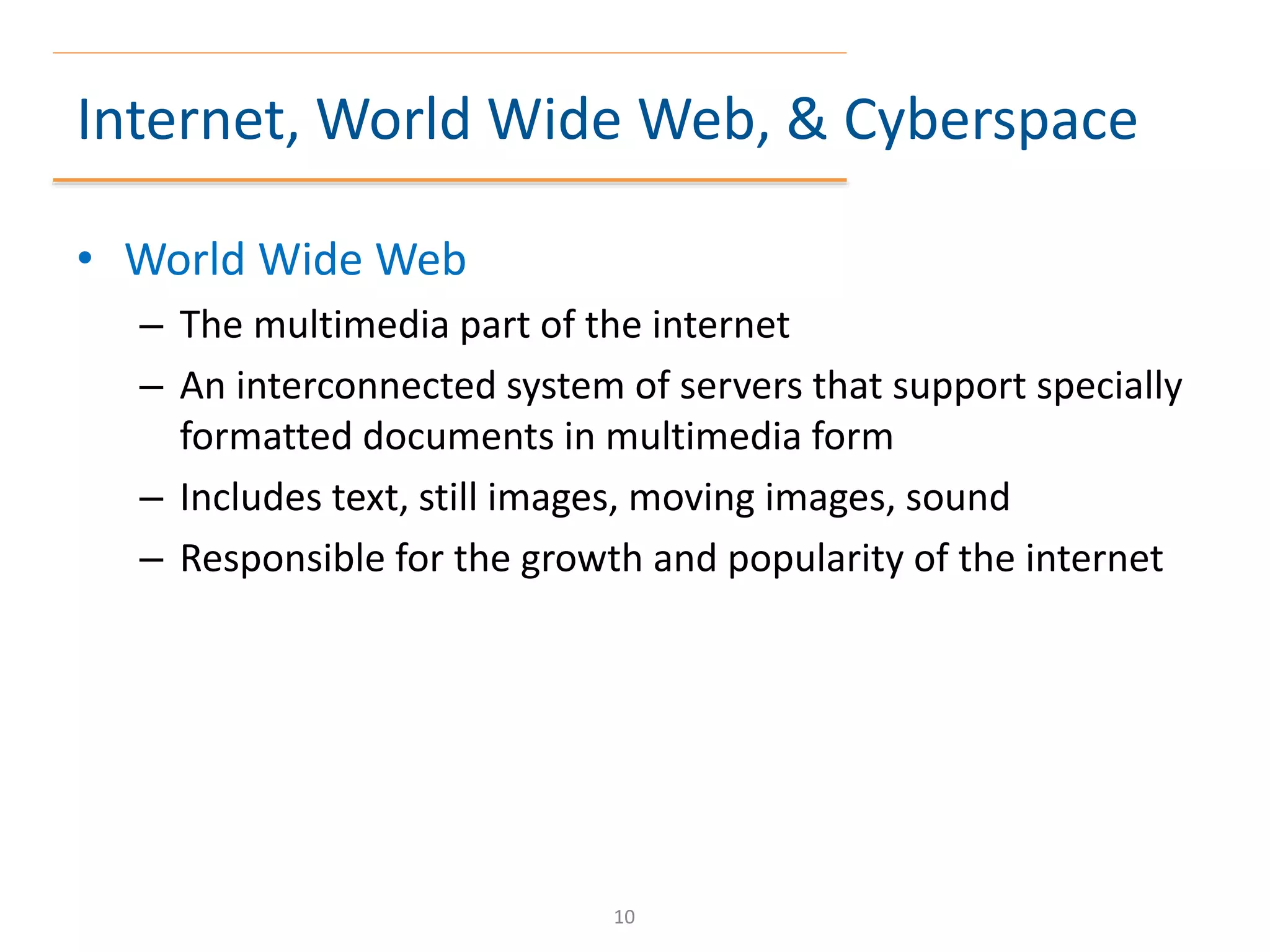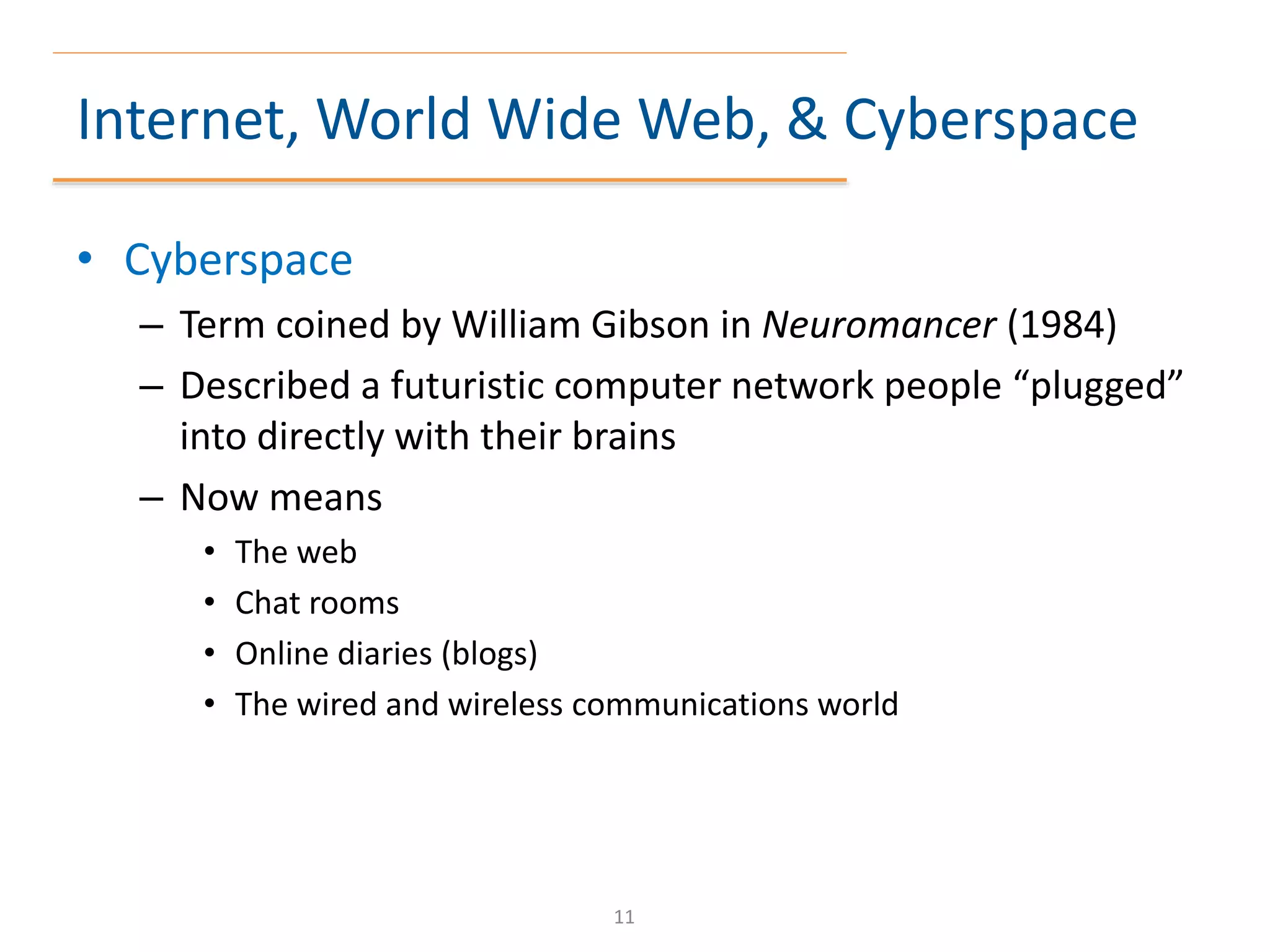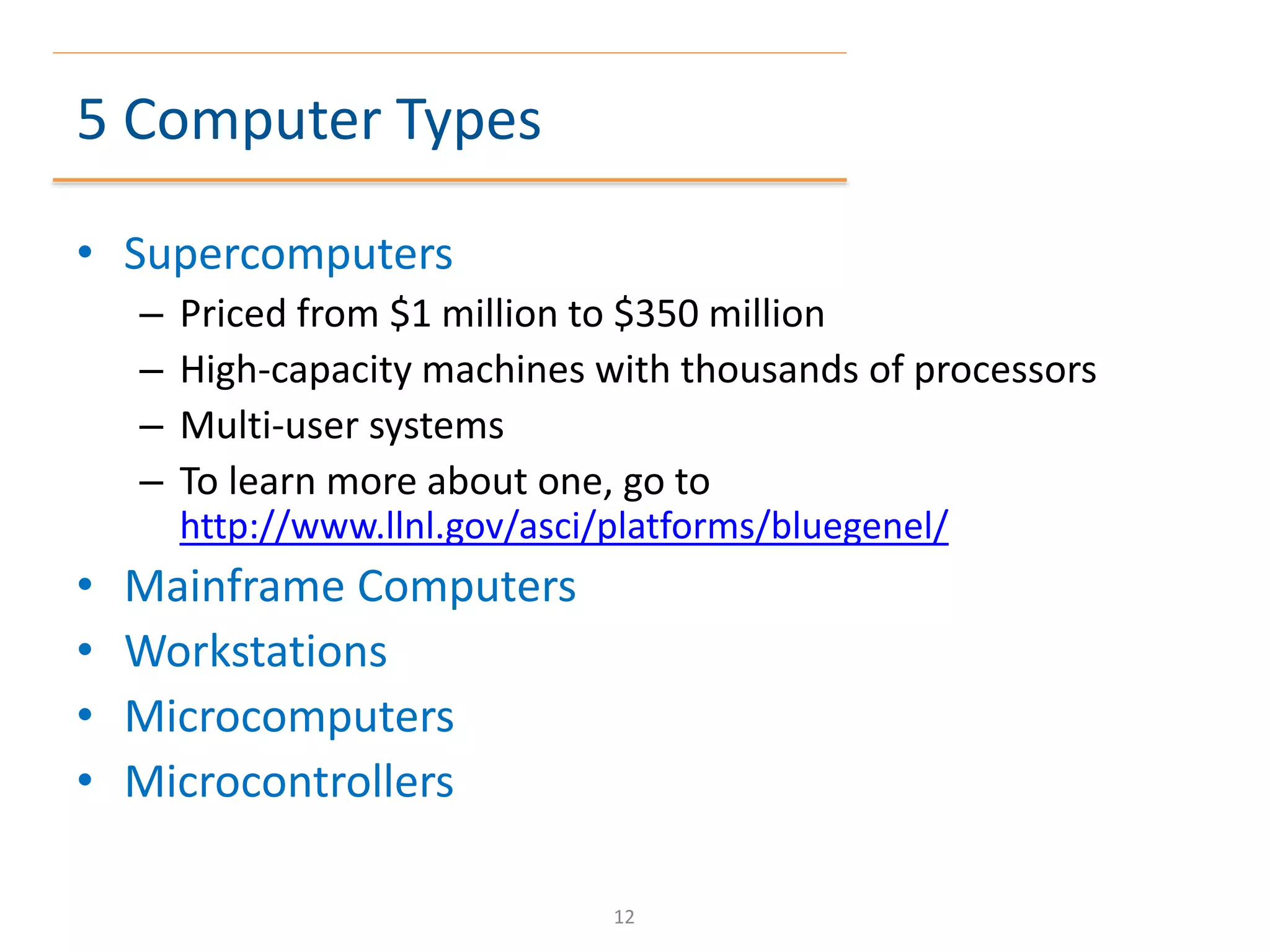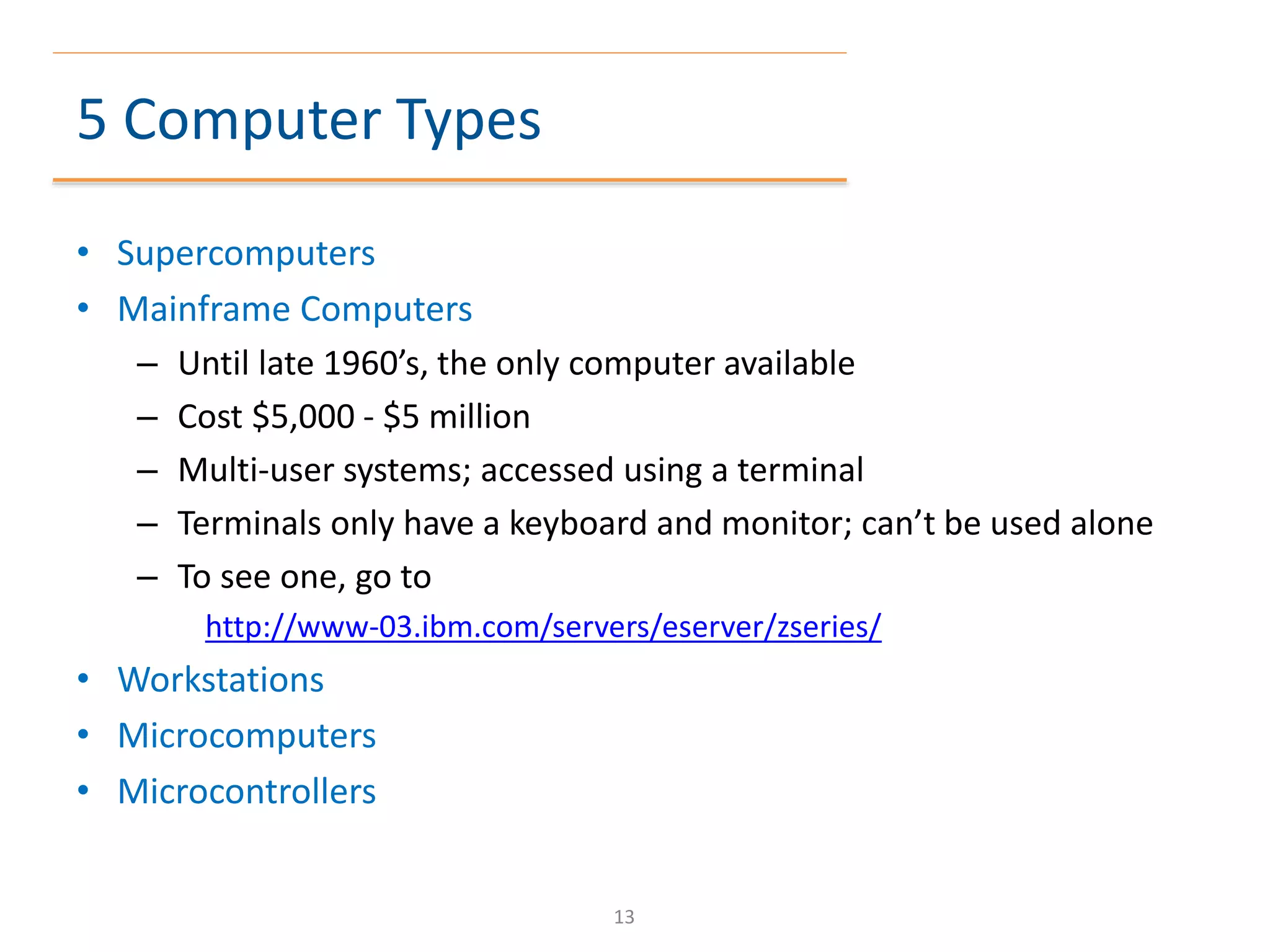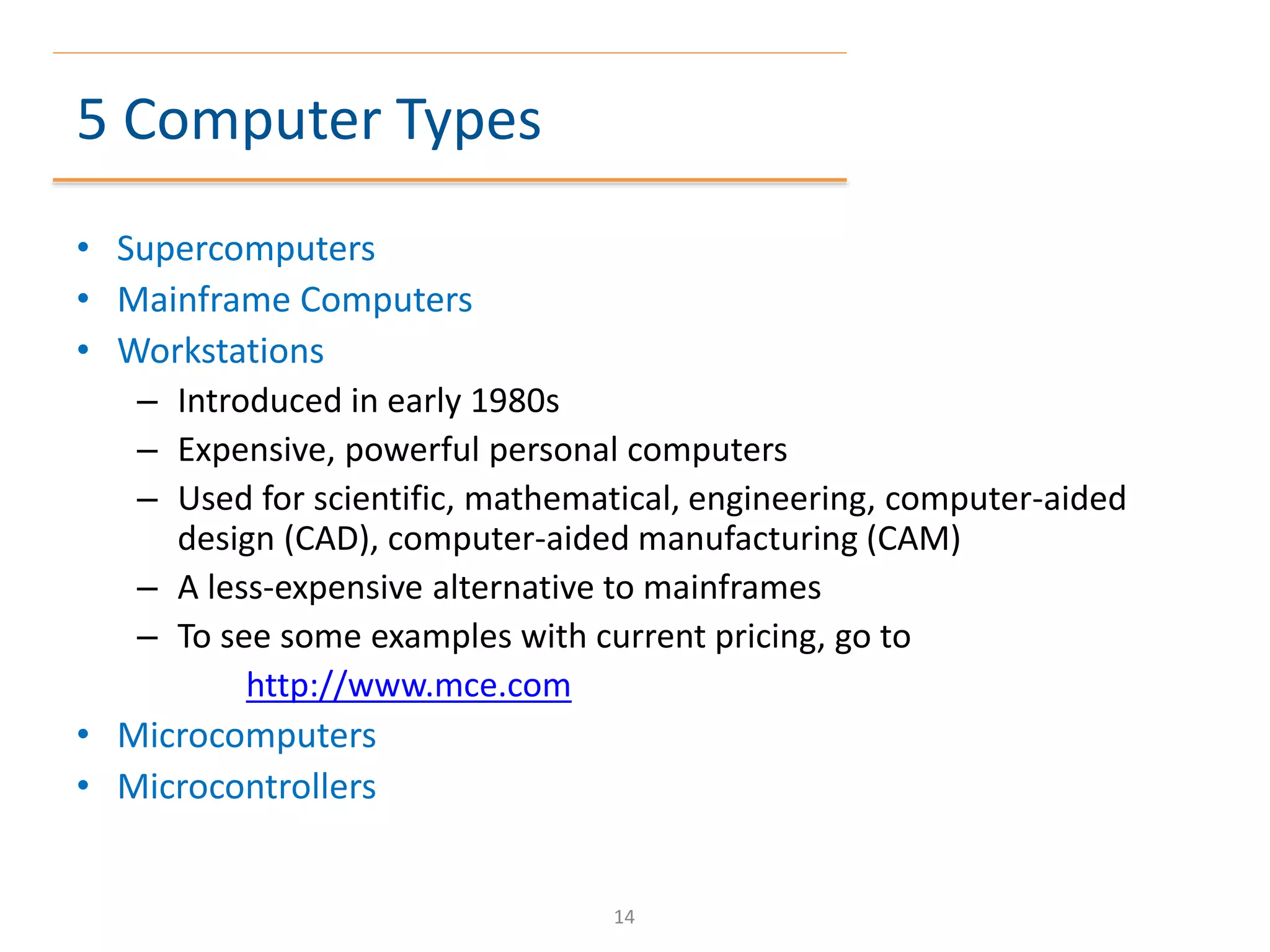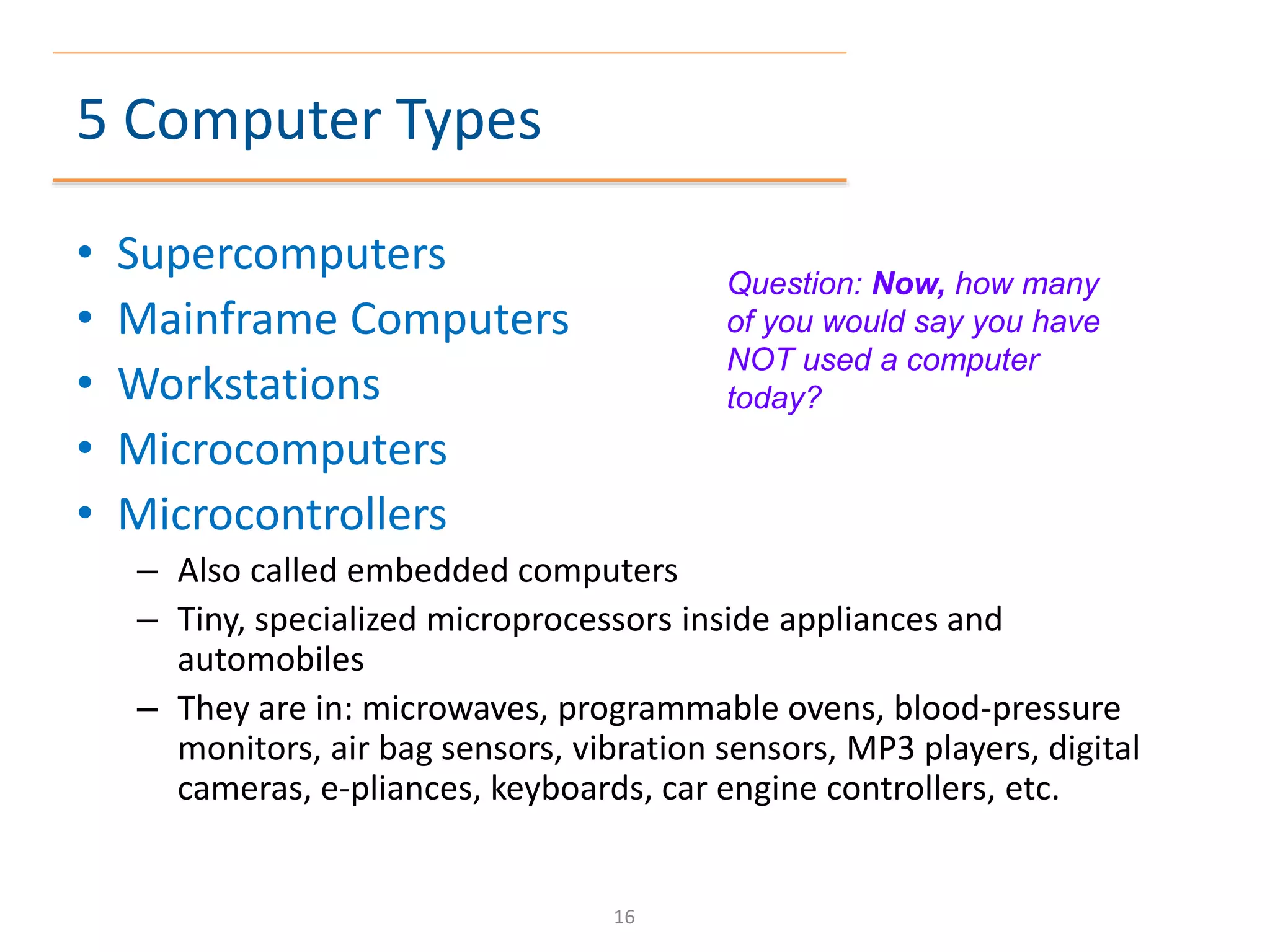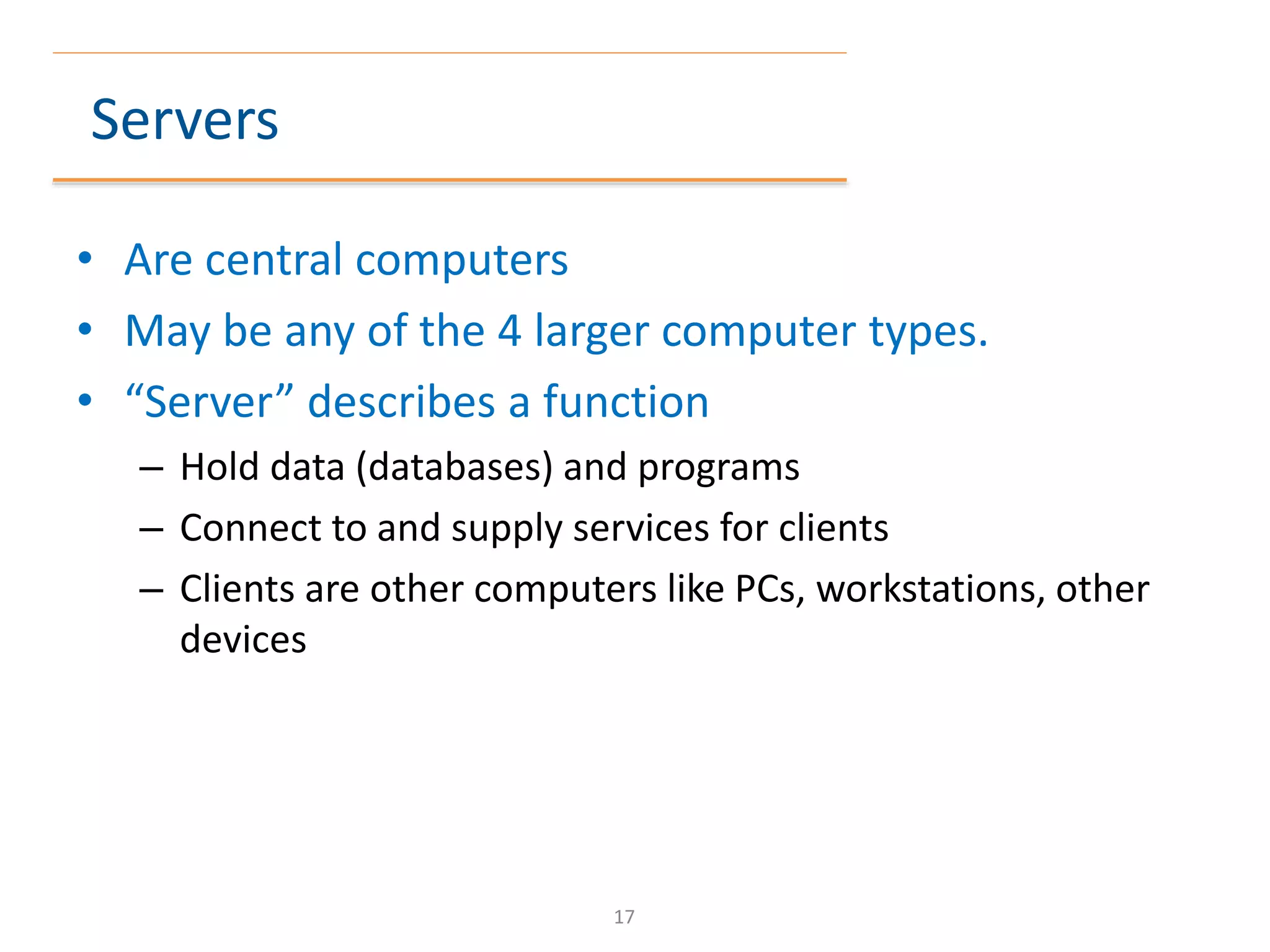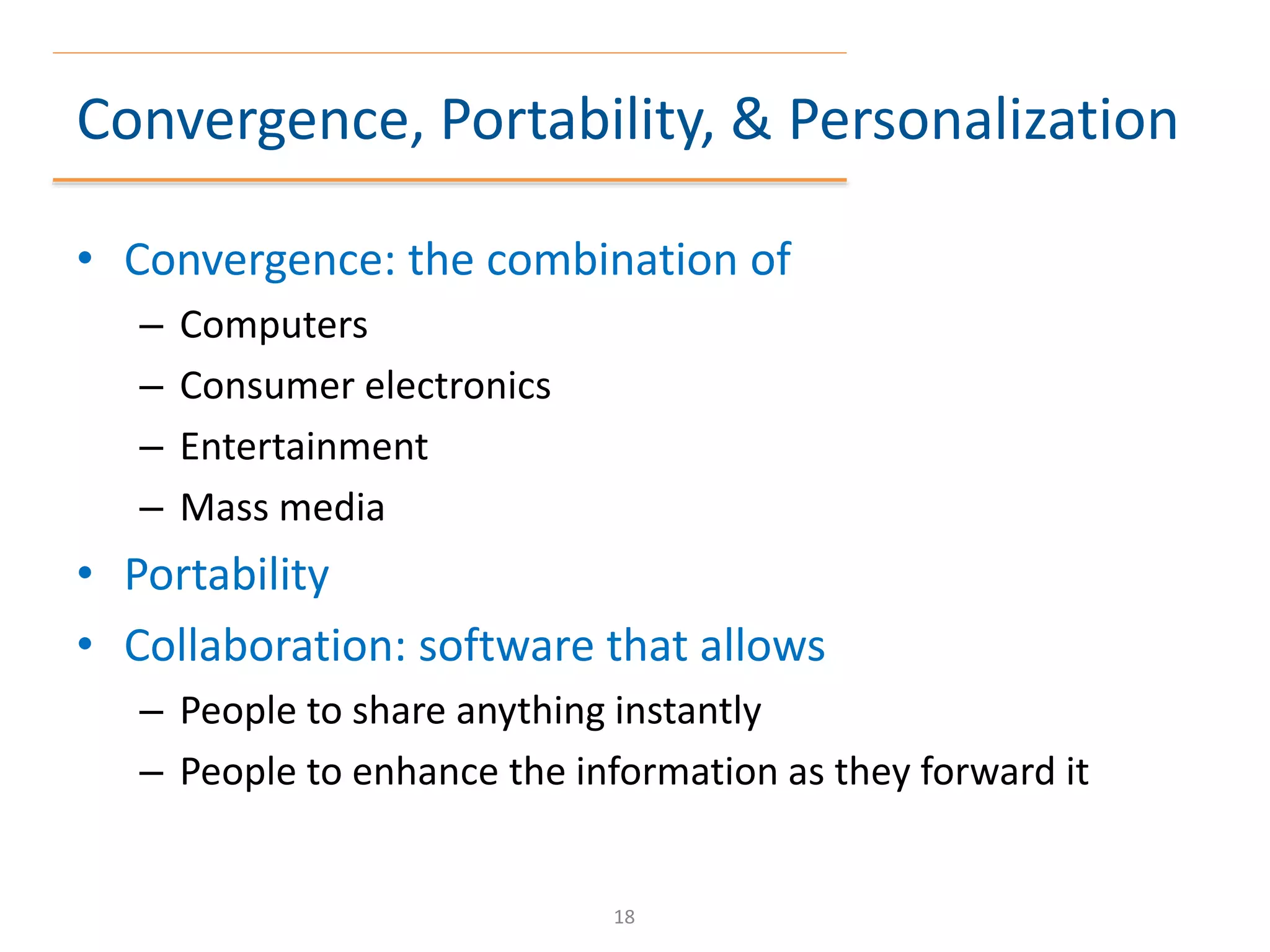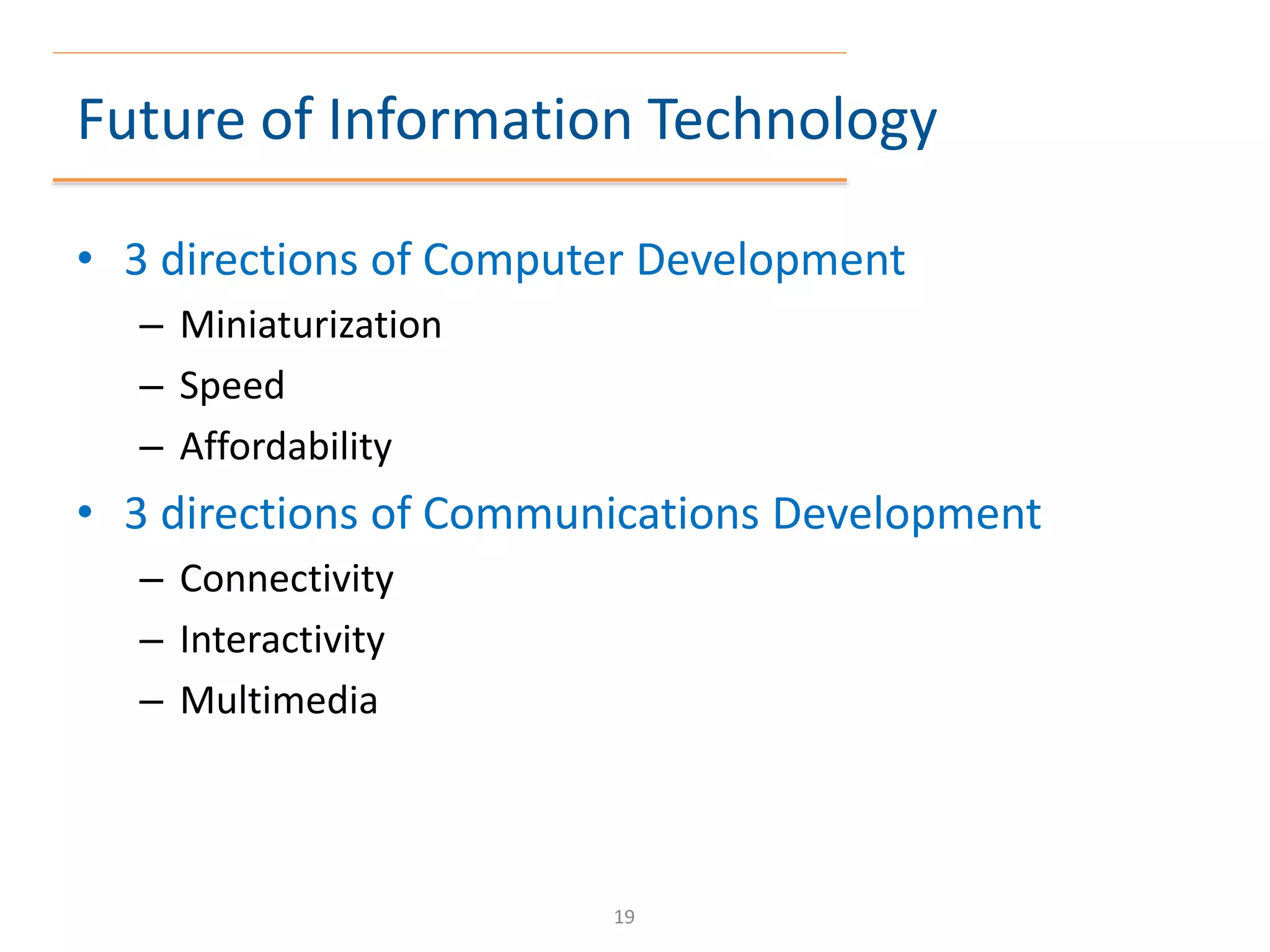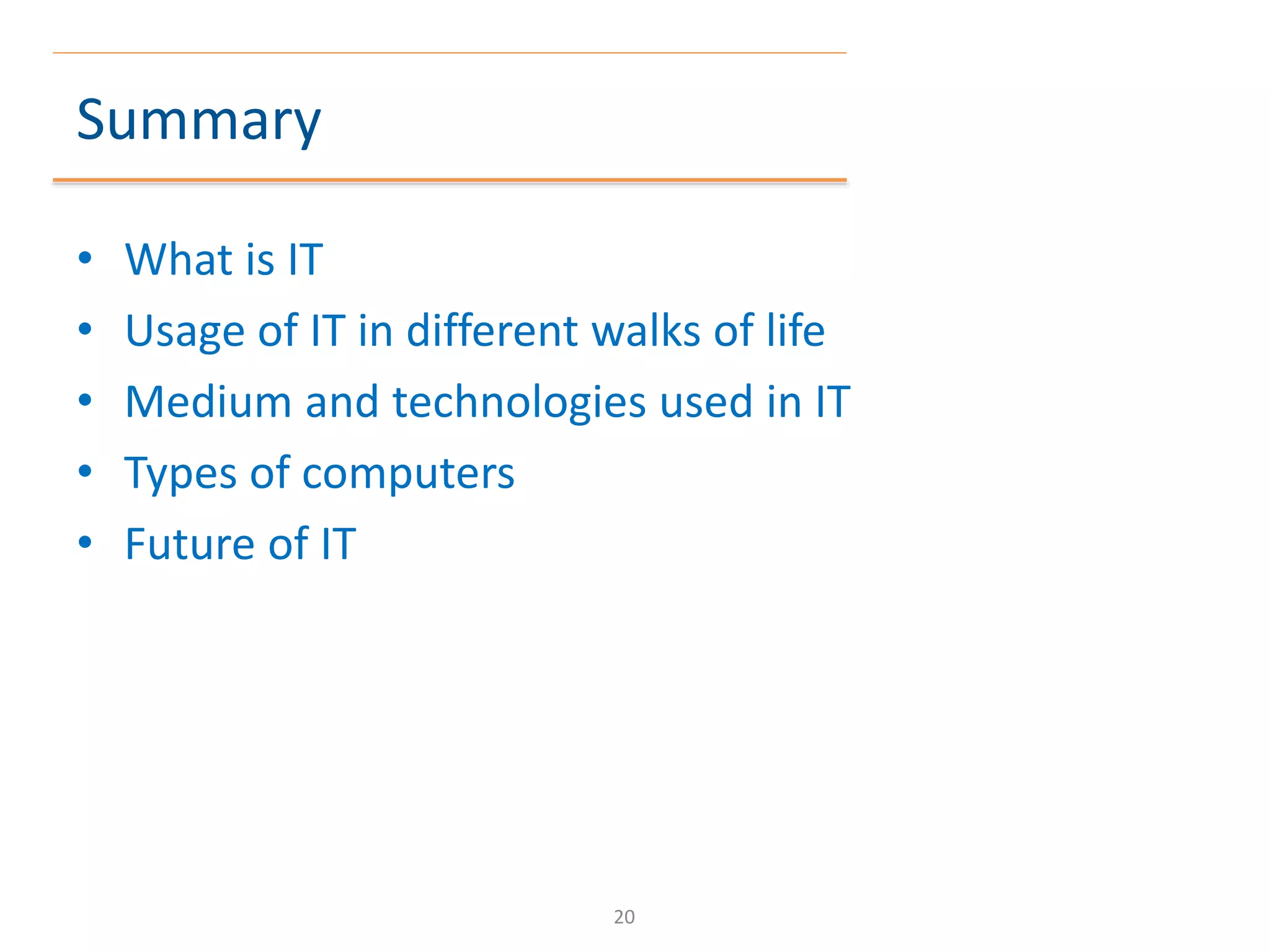This document provides an overview of the topics that will be covered in a course on professional practices in information technology (IT). The course will cover introductions to IT and professionalism, ethics, information security and privacy, intellectual property laws, and social responsibilities of IT professionals. It will also discuss how IT is used in different domains like education, health, finance, entertainment, and careers. The document outlines different computer types including supercomputers, mainframes, workstations, microcomputers, and microcontrollers. It also discusses topics like servers, trends of convergence, portability and personalization in IT, and future directions of computer and communication technologies.


